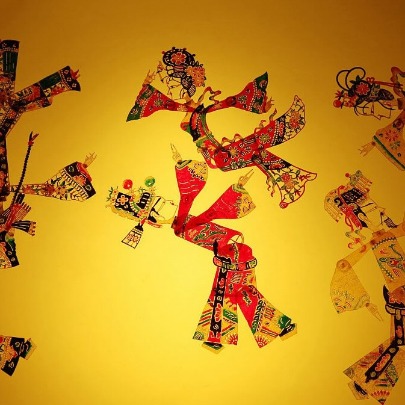
Chinese shadow puppetry (皮影戏,pí yǐng xì), or shadow play, is probably one of the most ancient arts using light and shadow (光影,guāng yǐng), thousands of years before its much more popular successor, the film.
However, unlike film, which now enjoys a global market worth billions of US dollars and various glamorous awards and festivals, shadow puppetry has been fading from the spotlight (聚光灯,jù guāng dēng).
In recent years, local artists and troupes across China have been exploring ways to revive the ancient art form and to pass it on to the next generation. Their effort has garnered encouragement and support from the Chinese government, which is devoted to national rejuvenation, including the country’s traditional culture.
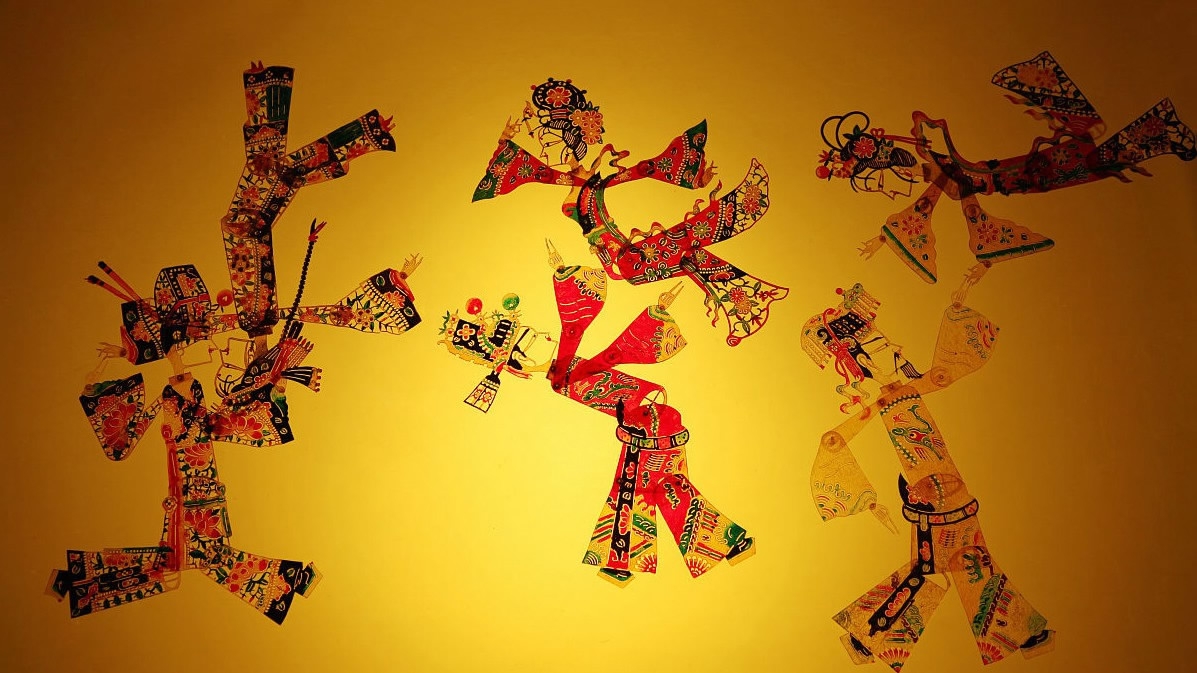
In 2011, Chinese shadow puppetry was added to UNESCO's Intangible Cultural Heritage (非物质文化遗产,fēi wù zhì wén huà yí chǎn) list, thus injecting new vitality into the ancient art form.
Although it is still far from regaining its old glory, the ancient art form has found its value elsewhere.
A combination of various art forms
Shadow puppetry is widely scattered across China, especially in rural areas, and has many genres (流派,liú pài) according to the different culture of each location. Generally, it is a combination of various art forms involving painting, carving, music, opera performance and story-telling.
The history of the art form could be traced back to the Han Dynasty (202 BC – 220 BC). It is said to be invented by a minister, who presented the silhouette (剪影,jiǎn yǐng) of Emperor Wudi’s deceased concubine to console the monarch.
Compared to its high-profile origins, however, the art form was later adopted by the civilians, and went through the backwards development from grassroots to the court.
Shadow puppetry was widely performed in the Tang Dynasty (618-907), and was introduced into West Asian and European countries during the Yuan Dynasty (1271-1368).
The art form met its heyday (全盛时期,quán shèng shí qī) in the Qing Dynasty (1644-1912), when the puppetry was performed in almost every province. From the countryside to the court, almost all the troupes were well equipped with boxes of delicately carved puppets. The puppetry was performed at various celebrations, ranging from funerals (葬礼,zàng lǐ) and weddings (婚礼,hūn lǐ) to Spring Festival celebrations.
There were even plays in a series, which were shown in the same form as today’s TV dramas. Such plays could be performed for over half a month.
A close-up of the shadow puppets
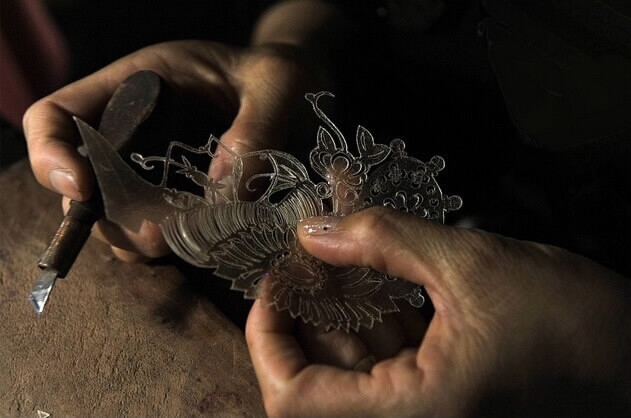
It was not an easy job to make the puppets used in the performances. Most of the puppets were made of leathers from livestock, such as cattle, donkey and sheep.
The leathers must be carefully selected and repeatedly polished and processed (打磨加工,dǎ mó jiā gōng) before they are ready for carving the puppets. When the leathers become transparent, fine and smooth enough, the artists would paint the characters on it, and then carve (刻,kè) them out with various kinds of tools.
The artistic images of the puppets have adopted the techniques and styles of the silk paintings (绢画,juàn huà) and decoration bricks of the Han Dynasty, as well as the Buddhist frescoes (壁画,bì huà).
Most of the traditional puppets were one-sided flat figures, and the decorative patterns on their clothes were arranged strictly in accordance with the status and class of the figures.
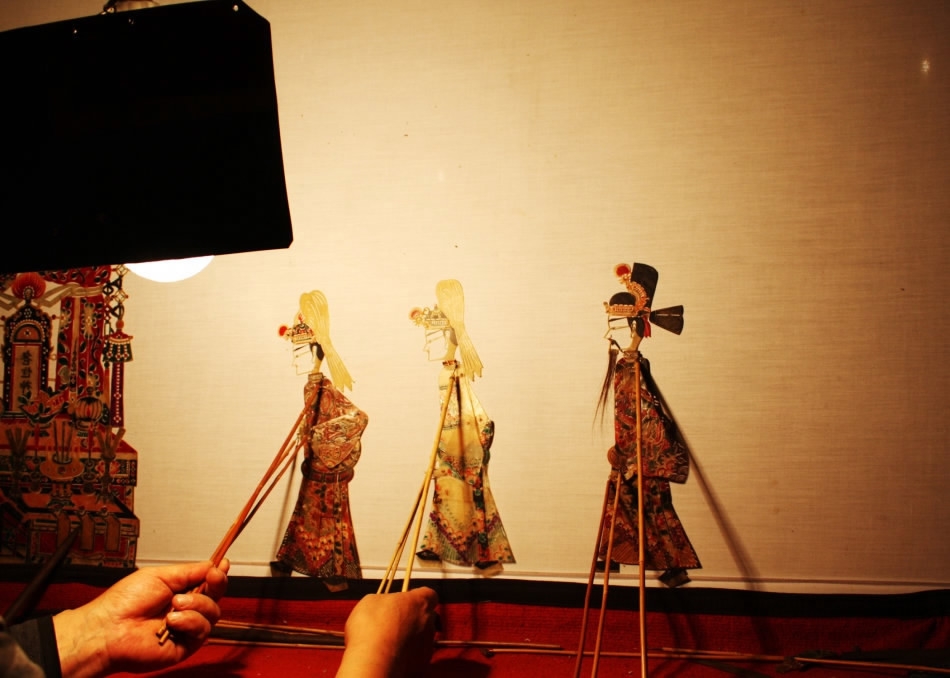
The body parts of the puppets are separately cut out and joined together, so that they could have as much as 24 movable joints (活动关节,huó dòng guān jié). Puppeteers hold them with rods linked to their most important joints during the performances, so that the puppets could be presented as "moving images" on the screens.
The sophisticated puppeteers were able to operate five rods on one puppet with only one hand, so that the puppet could sometimes be as vivid as a living creature.
No wonder Chinese shadow puppetry was also dubbed as the "forefather of the films (电影始祖,diàn yǐng shǐ zǔ)".
One-bundle troupe for shadow puppetry
Chinese shadow puppetry was sometimes nicknamed as "one-bundle” puppetry by the Chinese folk people, because all the characters in the plays, the puppets, could be easily collected in one box, which is highly portable.
Most of the puppeteers, instead of being trained in academies, are usually amateurs who have interest in puppetry. However, that doesn't stop them becoming talents in the field. Some puppeteers are able to play several traditional instruments (传统乐器,chuán tǒng yuè qì) – sometimes simultaneously.
They also have to be oral actors and actresses, who could act with their voices. By bestowing their own voices to the puppets, they are required to be capable of singing several local operas (地方戏曲,dì fāng xì qǔ), and of having a good sense of rhythm (节奏感,jié zòu gǎn).
The puppetry folk troupes were usually small, with big ones having seven to nine performers, while smaller ones had only two to five. Despite being small in numbers, the puppetry troupes used to have a large market. They were invited to perform at nearly all kinds of occasions, aside from entertaining.
A modern narration of the ancient tale
Nowadays, as art forms and ways to entertain diversify, shadow puppetry has long lost its glory. However, artists and enthusiasts (爱好者,ài hào zhě) who have a deep affection for the ancient art, have found ways to help it survive.
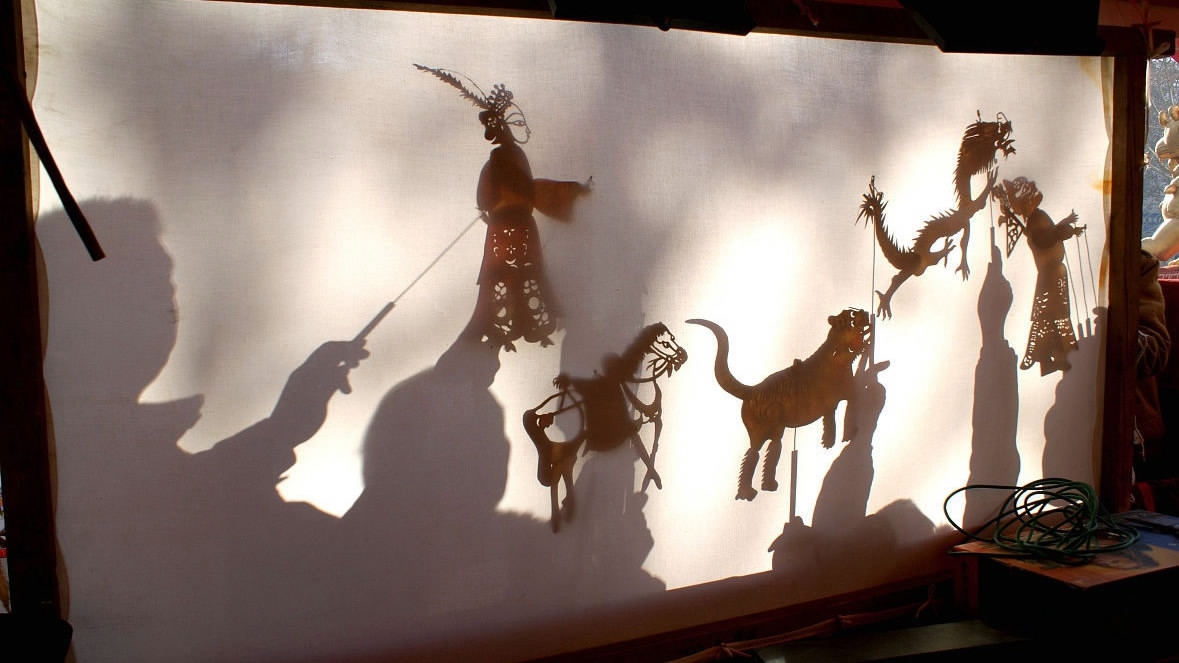
After retiring from the stage, the puppets have found a new home in museums and souvenir (纪念品,jì niàn pǐn) shops.
For instance, in northwestern China’s Shaanxi province, one of the birth places of shadow puppetry, the artists now produce delicate (精致的,jīng zhì de) shadow puppets as handicraft art (工艺品,gōng yì pǐn) and frame them for souvenir shops. Their prices vary from dozens of yuan to several thousand.
The puppets are so welcomed by both domestic and foreign tourists around the world that they even help to promote small puppet producing workshops to companies.
Xue Hongquan, an inheritor (传承人,chuán chéng rén) of shadow puppetry in Huaxian County, Shaanxi province, is one of those who found business opportunities in the art form as well as ways to protect it from dying out.
Driven by a market-oriented strategy, Xue has developed his own company to preserve and further develop the traditional art form. But making a fortune out of puppetry is not his final goal, Xue has been trying to bring shadow puppetry back onto the stage.
He innovated the traditional performance of shadow puppetry, and introduced modern music (现代音乐,xiàn dài yīn yuè), light and performing skills. Xue’s puppets could not only perform ancient plays, but could also imitate modern dances such as ballet (芭蕾舞,bā lěi wǔ) and even Michael Jackson’s famous moves.
"Inheritance and marketing are never contradictory. It is only by marketing the traditional heritage, and making more people love it and accept it, could the heritage be passed on," said Xue.
Thanks to modern narration, it seems that shadow puppetry has reclaimed its lost glory.
If you have any problems with this article, please contact us at app@chinadaily.com.cn and we'll immediately get back to you.